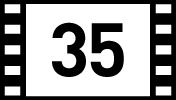

Because it spawned such a legacy, few remember that The Terminator was a little indie film made by a couple of scrappy low-budget lifers—probably the two individuals who learned the most coming up through the Roger Corman School of exploitation filmmaking. James Cameron was a thirty-year-old miniature model maker, matte painter, and art director on ultra-low budget pictures like Corman's Battle Beyond the Stars and Galaxy of Terror and John Carpenter's Escape from New York, who had advanced to the vacated director's chair on Piranha II (though was anyone really in charge of that film?). Gale Anne Hurd was a 29-year-old producer who had worked her way up through various administrative positions to become Corman's executive assistant and then started her own production company. The two budding filmmakers were a couple who met while working on various projects (they would marry in 1985) and, in their spare time, worked on a screenplay that Cameron had been concocting for years. The story was an ingenious and original tale (all due respect to the brilliant but cantankerous Harlan Ellison, who successfully sued the film's production company Hemdale and its distributor Orion Pictures for "plagiarizing" his Outer Limits episode "Soldier," to which Cameron's script bears only a cursory resemblance).
The Terminator is built around a simple but brilliant concept: there has been a war fought on Earth against humans and the computer systems and machines we built that one day became sentient and declared war on us. In the year 2029, the machines are losing the war because of a heroic human leader named John Connor. They send an assassin cyborg, known as a Terminator, back in time to 1984 Los Angeles to hunt down and kill John Connor's mother before he's even conceived. A human soldier named Kyle Reese also goes back in time, intent on stopping this murder. When Sarah Connor meets Reese, she doesn't believe his fantastic story, but he's her only chance at survival because The Terminator will stop at nothing until he's wiped out every Sarah Connor in LA County.
I'm convinced this movie would have turned out phenomenally well regardless of who was in the titular role, but with Arnold Schwarzenegger as The Terminator, the concept of an unstoppable killing machine in human form comes across in a single image, requiring almost no exposition. Similarly, the expressionless Schwarzenegger in sunglasses and a leather jacket holding a big gun on the poster and VHS box cover conveyed something sinister and instantly intriguing. Cameron had written the script envisioning The Terminator as a nondescript everyman who could blend into his surroundings and hunt his prey without drawing attention to himself. He thought of his buddy Lance Henriksen, whom he'd met painting sets on low-budget exploitation pictures. But while looking for a name actor to play Reese, he was convinced to take lunch with the Austrian former Mr. Universe, who had been one of the subjects of the hit documentary Pumping Iron and was now trying to make the jump to movie actor. Schwarzenegger had risen above his thick accent and far-too-big-for-a-marquie name as the star of Conan the Barbarian in 1982. Cameron thought the bodybuilder an unlikely choice to play his hero, but casting him in the role of The Terminator capitalizes on Schwarzenegger's strengths as a screen presence and minimizes his weaknesses as an actor.
In the central role of Sarah Connor, Linda Hamilton is instantly relatable, deeply sympathetic, and able to play the full arc of a character who starts out as an overwhelmed victim condemned to a never-ending chase but learns to stand her ground and fight back. Michael Biehn, who would go on to make several more films with Cameron and Hurd, became a star in the role of Kyle Reese. Biehn's slender form and clean-cut look make him seem small and delicate next to Schwarzenegger. They both first appear on screen naked (as that's the only way to travel through time in this story). The Terminator comes through looking solid, toned, and unfazed by the time travel process, whereas Reese looks like the ordeal of traveling back to 1984 took a punishing toll on his body. But Biehn brings a fierce determination to the part, and his chemistry with Hamilton is genuine. The two leads are as convincing in their brief but crucial romantic scenes, which could have turned out corny in lesser hands, as they are in the climactic action sequence that requires them to appear to be in a life-and-death struggle with a stop-motion robot skeleton.
Rounding out the cast as a harried but compassionate police lieutenant who tries to protect Sarah is the great Paul Winfield (who also had a fascinating, semi-autobiographical role in another memorable 1984 film, Mike's Murder). While Henriksen didn't get to play The Terminator, the actor does get one of his only semi-comedic roles as the lieutenant's right-hand officer. Winfield and Henriksen give terrific performances that bring levity and warmth to the film while simultaneously ratcheting up the tension since they incorrectly believe that Sarah Connor is perfectly safe at the police station. Bill Paxton, Cameron's old buddy from his day's painting sets for low-budget art departments, plays his first truly memorable character in the scene that introduces The Terminator, and Corman regular Dick Miller has a great scene that demonstrates the Terminator's lack of concern about anything getting in his way.
Made for $6.5M cobbled together by various production entities, The Terminator is one hell of an '80s indie movie. Cameron's ability to shoot the action scenes, mostly at night, makes the film feel like a much bigger production than it was. Though a sci-fi story, it plays much more like a dark, scary action thriller or a slasher film with a techno twist. There are only a handful of visual effects (including early work by the great Stan Winston). The real special effect is Schwarzenegger's massive form and emotionless face. He genuinely seems unstoppable. Cameron shoots in a classical style, with visual motifs that instill the sense that the machines we currently live with (or lived with 40 years ago)—toy trucks, answering machines, motor vehicles—each already have the potential to be threatening and dangerous. The picture is lean and economical, not wasting a minute of screen time on anything extraneous, yet never feeling rushed or like it has to keep going in order to hide its budgetary limitations. In fact, all the best scenes in this movie happen during downtimes between chases.
Brad Fidel's iconic music was composed on a Prophet-10 synthesizer in the odd time signature of 13/16. Fidel wanted the theme to sound like a robot's heartbeat, and he accidentally hit upon the weird beat when he created an incomplete precision loop on his synth sequencer. Thus, the Terminator Theme is almost impossible for a human to play unless one is just performing the melody without keeping time to the difficult-to-follow rhythm. The seemingly simple score is unlike any other soundtrack of its period and still stands as one of the most unusual movie themes.
The little indie did incredibly well in theaters and was a colossal hit on VHS, which is how I first saw it. A sequel was inevitable, though Cameron had two huge movies to make beforehand. He was hired to direct Aliens based on the strength of the script he'd written for Alien producers Walter Hill, David Giler, and Gordon Carroll, who waited for him to finish The Terminator before going into production on their picture. The massive success of Aliens enabled Cameron to make his first of many underwater epics, The Abyss. But Terminator 2 did come to the screen in 1991, with Schwarzenegger and Hamilton reprising their roles with significant spins on each character. Though T2 is as much or more of a remake/rehash as it is a sequel, Cameron devised many sharp ways to deliver "the same but different" by making Schwarzenegger the good guy and creating a new, more advanced Terminator that was closer to the original conception of the "everyman Terminator." Hamilton transformed herself physically to portray Sara Connor as a hard-as-nails protector and survivalist teacher of his teenage son. Terminator 2 was as much a showcase for digital effects as a character-based thriller, but I was sufficiently impressed by what Cameron did with his big-budget sequel.
Still, The Terminator is one of those perfect stand-alone '80s movies that I kind of wish hadn't been further developed. Cameron devised a terrific backstory in his screenplay, but it isn't the type of thing that can credibly sustain an ongoing narrative—as the many sequels that followed T2 demonstrate. There isn't really a world or "a cinematic universe" in The Terminator solid enough for complex exploration. What makes the original film special is how deeply human this movie about a killer robot is. The characters of Sarah and Kyle and all the folks who live in 1984 LA are grounded in everyday realities (despite the fantastic circumstances). In T2, everything feels a bit contrived, but in The Terminator, we get swept up into the lives of the characters because they seem so much like people we know. That, as much as Schwarzenegger's incredible screen presence, is why the movie made such an impact and why it remains such an endlessly pleasurable re-watch.
With this deeply humman strory about a killer robot, James Cameron and Gale Anne Hurd delivere of the greatest indie movies of the 1980s with iconic performacnes by Linda Hamilton, Michael Biehn, and a superstar-making turn by Arnold Schwarzenegger.










